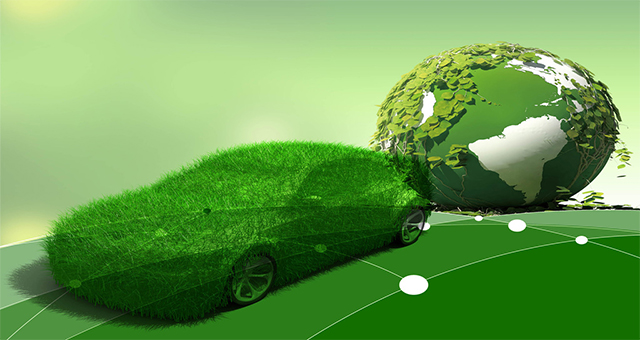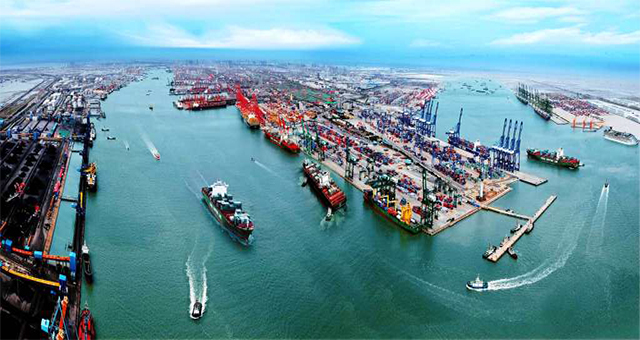
Chinese-made electric buses join Chile's public transit fleet
Chile's Transport Minister Paola Tapia on Tuesday greeted the incorporation of the first batch of Chinese-made electric buses into the capital's public transit fleet. "We are advancing in quality for commuters by incorporating electric buses starting now, fulfilling our commitment to greater comfort and greater efficiency in the service and to caring for the environment," said Tapia. Manufactured by China's BYD corporation, the two 81-passenger buses are equipped with cushioned seats, air conditioning, Wi-Fi, charging outlets for mobile devices and a secure separate cabin for drivers. Transit authorities said they expect the new units to cut operating costs by some 70 percent, with electric buses consuming around 70 pesos (around 0.11 U.S. dollars) per km to run, compared to 300 pesos (around 0.47 U.S. dollars) for conventional diesel vehicles. "In 2018, we will have 90 of these buses in circulation and we will be pioneers in Latin America in electric mobility for public transit," said the minister. The new buses can be charged in just two to three hours, allowing the buses to take various routes throughout the day covering some 250 km, Tapia said. Chilean Energy Minister Andres Rebolledo also welcomed the new members of the capital's transportation system. "These first two electric buses are great news for a country like Chile, since the transport sector accounts for a third of the energy consumption," he noted.
Shanghai FTZ wins top honor in Asia Pacific Region
Shanghai Free Trade Zone was named among the Top Free Zones in Asia Pacific Region by Site Selection magazine, the official publication of the Industrial Asset Management Council, recently. Chen Xi, deputy director of Shanghai FTZ Administration, met Adam Jones Kelley, president of IAMC and expressed his gratitude for the zone winning the award. He hoped the zone can have more exchanges and establish cooperation with other FTZs in the world through IAMC. Chen said the award is a global recognition for the achievements and reforms the zone has made, and he told his guests that the FTZ is working hard to build free trade port and he welcomed Kelley to make investments in Pudong New Area. Kelley spoke highly of the achievements of the Shanghai FTZ, and said that he has witnessed the changes Shanghai has gone through since the 1980s. He would often refer to the successful cases of investment in the zone while introducing free trade zones. Next, IAMC will connect Shanghai FTZ with other FTZs and free trade ports in the world. At the end of the meeting, Kelley presented the award to Chen.
Cargo railway inking Finland and China opens
With more than 40 containers on it, the cargo train bound for Chinese inland city of Xi'an departed Kouvola, southeastern Finland, on Friday. It will take 17 days to run 9,000 km to cross the Eurasia continent, passing through countries including Russia and Kazakhstan, before reaching its final destination of the northwest China's Xi'an, one of the oldest cities in China. Compared with the normal sea freight, the cargo rail line can shorten the travel time by 30 days. NEW TRADE CHANNEL Goods packed in the containers are all made in Finland, ranging from machinery, timber, workwear to ship components, according to Jari Gronlund, chief operation officer of Unytrade company. Founded just in this summer, Unytrade especially serves the newly opened route, said Gronlund, who believes the only railway route linking Scandinavia and China will open a new channel to bring more Nordic products to the nations along the route. Olli-Pekka Hilmola, logistics professor at Lappeenranta University of Technology, told Finnish national broadcaster Yle that a regular train connection from Kouvola to China would be important to the Finnish economy. According to Li Zhao, Assistant of General Manager of Xi'an International Inland Port Investment &Development Group, the goods will be further transported to various markets in China after arriving in Xi'an. Being the main operator of the multinational project, the Group has outsourced the transportation in Finland to VR, the country's state-owned railway monopoly, and the other sections to the railway companies of Russia and Kazakhstan accordingly. As planned, a total of five trains would run between Kouvola and Xi'an by the end of this year. At the same time, a train would depart Xi'an towards Kouvola every week. Li said the running may start to pace up if the trade goes smoothly and hopefully a train of goods would be sent every day in the near future. ENHANCED INTEGRATION So far, hundreds of China-EU cargo trains have been running through the central Asia each year, but the new line diverted to Kouvola would serve as a new chapter for economic ties and cultural communication, said Murat Nurtleuov, Ambassador of Kazakhstan to Finland. He reminded the Belt and Road Initiative proposed by China, which was later supported by dozens of countries especially in Asia and eastern Europe, saying now that Finland has been part of it, a new direction is found. By launching the railway route, said Chinese ambassador to Finland Chen Li "we have achieved the communication among the four countries, which are China, Finland, Kazakhstan and Russia, the connectivity in facilities, the smooth flow of trade activities, the financial integration as well as the commonality among the people."
Falling renewable energy costs enable new options for greening industry: report
The rapid cost reductions in renewable energy such as solar and wind power have opened a new range of possibilities to cut industrial carbon emissions, a report on renewable energy showed. Reducing long-term greenhouse gas emissions of the industrial sector is one of the toughest challenges for energy transition, said the report by the China Economic Information Service (CEIS), an affiliate of Xinhua News Agency, and the International Energy Agency (IEA). Cement, iron, steel and chemicals will be responsible for the bulk of industrial emissions in 2050, said IEA analyst Cedric Philibert, writer of the report. To increase the use of renewables in the industrial sector, the report pointed out that the recent fall in costs of solar photovoltaics (PV) and wind power may create new options for greening the industry, either directly from electricity or through the production of hydrogen-rich chemicals and fuels. While electrification can better integrate renewables into the power grid, hydrogen-rich chemicals that are easy to store and transport could serve as feedstock, process agents and fuel, according to the report. The hydrogen-rich chemicals can be produced in areas with abundant resources and shipped to consuming centers, opening the prospects for a new kind of international energy trade, the report added. The report also examined emerging technology options, as well as national and international policies that encourage development of renewable energy. China is a major source of industrial emissions, but a staunch supporter of renewable energy. According to the government's 2016-2020 plan, renewable energy could supply 1.9 trillion kilowatt-hours of electricity, accounting for 27 percent of total power generation by the end of 2020.
China's new energy vehicle sales double in October
Sales of new energy vehicles in China more than doubled in October, while overall auto sales grew steadily, data from the China Association of Automobile Manufacturers (CAAM) showed Friday. Some 92,000 new energy vehicles were produced in October, up 85.9 percent year on year, and 91,000 were sold, up 106.7 percent from October 2016, according to CAAM. Total auto sales remained stable, with some 2.7 million vehicles sold last month, up 2 percent year on year. But growth slowed from the 5.7 percent growth in September. Meanwhile, a total of 2.6 million auto vehicles were produced in October, up 0.7 percent from the same period last year. However, on a month-on-month basis, auto sales dropped 0.2 percent, while auto production was down 2.5 percent in October. In the first ten months of the year, auto output and sales increased by 4.3 percent and 4.1 percent year-on-year to 22.96 million and 22.93 million, respectively. The robust growth came as China has intensified efforts to encourage the use of new energy vehicles to ease pressure on the environment, by offering tax exemptions and discounts for car purchases, and ordering government organizations to buy more new energy cars. In the latest move, Chinese banking authorities announced new loan policies to allow buyers of new-energy vehicles to borrow a larger portion of the purchase price. Starting in 2018, NEV buyers can borrow up to 85 percent of the cost from banks, up from the previous 80 percent.
A world-level ports cluster in Tianjin FTZ will be formed by 2020
Ports in the capital's neighboring Tianjin and Hebei province will accelerate the pace of their integrated development in maritime transport, a move to support the coordinated development of the Beijing-Tianjin-Hebei region. There are four major ports in the region-Tianjin Port, and Hebei's ports of Qinhuangdao, Tangshan and Huanghua-all of which are located along northern China's Bohai Sea Rim, according to the China Ports& Harbors Association. "The ports have complementary advantages, based on which we should share resources and information to achieve joint development," said Liu Guanghai, general manager of Hebei Port Group Co Ltd, which owns Qinghuangdao Port and several other wharves in Tangshan, Cangzhou and Handan. He said the coordinated development will save costs, improve efficiency and ease competition among all the ports. Liu made the remarks on last Wednesday while discussing a four-year plan on the coordinated development of ports in the region, which was issued by the Ministry of Transport last month. According to the plan, a world-level ports cluster in the region will be basically formed by 2020, with Tianjin Port being the center and ports in Hebei as its wings, the plan said. Tianjin Port, the largest comprehensive port in northern China, will focus on transportation services for containers, roll-on/roll-off automobiles and cruise liners, while ports in Hebei will mainly develop bulk cargo business. The clear division of functions can help avoid homogeneous competition among the ports and ensure all of them with vigorous development, Liu said. Based on the divided functions, other related industrial development will be encouraged, according to the plan. Tianjin Port can develop logistics for automobiles and coldchain deliveries, as well as modern shipping services such as financing and insurance. For ports in Hebei, coal-washing, coal-blending, and ore-screening services can be added. Hebei Port Group, which is headquartered in Tangshan, handled 325 million metric tons of cargoes last year, being the world's largest ports operator for major dry bulk cargoes, according to the group. By the end of 2020, the number is aimed to exceed 540 million tons.

Please leave us a message and we will get back to you shortly.

If you want to learn more information about investing in China, please leave your email address, we will send you the relevant information and article every month.
 0086-10-53270173
0086-10-53270173 china@tanikawa.com
china@tanikawa.com











